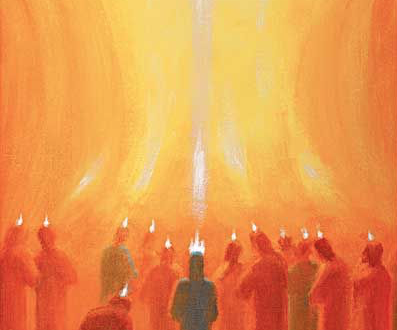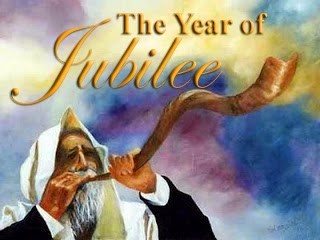
The Feasts of Israel – Hebrew Calendars, New Moon, Sabbath Year, and the Jubilee Year
In addition to the weekly Sabbath and the many festivals of Judaism (e.g., Passover, Tabernacles, etc.), Jewish institutions consecrated entire years (i.e., the Sabbatical Year and the Jubilee Year).
The Hebrew and Gregorian Calendars
The calendar typically used in the world today is called the Gregorian calendar, after Pope Gregory XIII, who instituted it in 1582, and is based on the earth revolving around the sun, thus making it a “solar calendar.” Each day begins at midnight and is 24 hours long. As the Earth revolves around the sun, the earth changes its position resulting in creating the four seasons. It takes approximately 365 and one-quarter days for the earth to make one complete revolution around the sun with our calendar year defined as 365 days. Consequently, we add an extra day every four years, called a leap year, to account for this extra quarter of a day. The Gregorian calendar contains twelve months of 28 to 31 days duration.
The Hebrew calendar, juxtaposed with the Gregorian calendar, is based on the earth rotating around the sun and the moon revolving around the earth, thus making it a “lunisolar calendar.” Hebrew days begin at sundown (approximately 6:00 P.M.) and last 24 hours.

It takes about 29 and one-half days for the moon to make one complete revolution around the earth, thus defining a lunar month. The Hebrew calendar contains twelve lunar months setting a 354 day year.

The four stages of the moon are important to raising crops: new moon, second quarter, full moon, and fourth quarter.
- The new moon gravitationally pulls water up through the soil and causes seeds to swell and burst. This makes it the best time to plant grain crops, and other plants are grown for above-ground produce. The increasing moonlight also causes a good balance between root development and leaf growth.
- The second quarter produces less gravitational pull but provides vibrant moonlight. This is very beneficial to leaf growth.
- After the full moon, the moonlight is waning, but the gravitational pull is strong again. This combination makes it best for planting root crops.
- The fourth quarter provides less gravitational pull and moonlight. This is more of a resting period, which makes it an opportune time for cultivating and harvesting. (11)
The harvesting times in Israel occur primarily during the fourth quarter of the moon. Since the feasts of God in Leviticus synchronize with the harvests, they also synchronize with the moon’s stages. For every harvest in Israel, there are three phases: firstfruits, general harvest, and gleanings. The phase of firstfruits also has three phases of activity: marking, gathering, and presenting. (11)
The difference between the two calendars means that the solar year is 11 and one-quarter days longer than the lunar year. To mostly compensate for this yearly difference in the Civil calendar, an extra 29 and one half-day month is added at the end of every three regular years, called a leap year, to account for this additional 11 and one-quarter days.
There are two concurrent Hebrew calendar years with one a Biblical calendar that God established when He delivered the nation of Israel out of Egypt.
The Lord said to Moses and Aaron in the land of Egypt, “This month is to be your beginning of months; it will be your first month of the year. (Exodus 12:1,2 NET)
The month of Nisan, originally called Abib (Aviv) but was changed during the Babylonian captivity, is the first month of the year on the Hebrew (Biblical) calendar. Nisan corresponds to the months of March-April on the Gregorian calendar. Note that each month on the Biblical calendar may come in one or two Gregorian months due to the eleven and one-quarter days difference between the two calendars. (3)
The other is the civil calendar begins with the Hebrew month of Tishri, which corresponds to the Gregorian months of September and October. This is the beginning of the agricultural season. That is, the civil calendar is aligned with the agricultural season beginning with the early rains that softened the ground for plowing, which was done in September and October. This was followed by the sowing of barley, flax, and wheat seed in November and December. Then the winter rains would come in December and January to maintain the ground moist. This was followed by the blossoming of the almond trees in January and February and the citrus harvest in February and March. (3)

(16)
The spring or latter rains fell in March-April (Nisan), concurrent with the beginning of the barley harvest. The dry season was from April-May (Iyyar) to August-September (Elul). The barley harvest lasted through the spring months and was followed by the wheat harvest in May-June (Sivan). The grape harvest came next during the months of June-July (Tammuz). The months of July-August (Ab) were the time of the olive harvest. The season ended with the harvest of dates and summer figs in August-September (Elul).
Biblical Calendar Leap Years
The Biblical Calendar year begins with the first New Moon after the barley in Israel reaches the stage in its ripeness called Abib. The period between one year and the next is either 12 or 13 lunar months. Because of this, it is important to check the state of the Barley crops at the end of the 12th month. If the barley is Abib at this time, then the following New Moon is the “New Moon of the Abib” (Hodesh Ha-Abib). If the barley is still immature, then the barley is checked again at the end of the 13th month. Consequently, it can only be determined whether a year is a Leap Year a few days before the end of the 12th Month. The month of the Nisan (Abib) is the month that commences after the barley has reached the stage of Abib. (6)
Sound the ram’s horn on the day of the new moon, and on the day of the full moon when our festival begins. For observing the festival is a requirement for Israel; it is an ordinance given by the God of Jacob. He decreed it as a regulation in Joseph, when he attacked the land of Egypt. I heard a voice I did not recognize. It said: “I removed the burden from his shoulder; his hands were released from holding the basket. In your distress you called out and I rescued you. I answered you from a dark thundercloud. I tested you at the waters of Meribah. (Selah) (Psalm 81:3–7 NET)
God set fixed times and seasons when the Jews were to keep their feasts (Leviticus 23:4). Consequently, this Biblical Calendar Leap Year adjustment that sets the Feast of Passover (1) in the correct season also sets the other feasts in their correct seasons. Thereby enabling the Jewish people to keep their feast days in the seasons prescribed by God.
Aviv
What is Aviv/Abib? Aviv indicates a stage in the development of the barley crops.
When Moses extended his staff toward the sky, the Lord sent thunder and hail, and fire fell to the earth; so the Lord caused hail to rain down on the land of Egypt. Hail fell and fire mingled with the hail; the hail was so severe that there had not been any like it in all the land of Egypt since it had become a nation. The hail struck everything in the open fields, both people and animals, throughout all the land of Egypt. The hail struck everything that grows in the field, and it broke all the trees of the field to pieces. Only in the land of Goshen, where the Israelites lived, was there no hail. (Exodus 9:23-26 NET)
(Now the flax and the barley were struck [down] by the hail, for the barley had ripened [Hebrew: abib] and the flax was in bud. But the wheat and the spelt were not struck [down], for they are later crops.) (Exodus 9:31,32 NET)
The flax and barley crops were struck down or destroyed by the hail, while the wheat and spelt were not damaged. When grains are early in their development, they are flexible and have a dark green color. However, as they become ripe, they take on a light yellowish hue and become more brittle. The barley was destroyed, and the wheat was not because the barley had reached the stage in its development called Aviv/Abib and, as a result, had become brittle enough to be damaged by the hail. However, the wheat and spelt were at a stage when they were flexible and not susceptible to hail damage. (5)
The month of Nisan (1) is the month that only commences after the barley has reached the stage of Aviv/Abib. This means the month of Nisan cannot begin unless the barley has reached a stage where it will be harvest-ready 15-21 days later (i.e., by the Sunday during the Feast of Unleavened Bread, which is the day of the Feast of Firstfruits). If the barley is not developed enough to be ready for the sickle 15-21 days later, then the month of Nisan cannot begin until the next month. (5)
We know from several passages that barley in the state of Aviv has not completely ripened but has ripened enough so that its seeds can be eaten parched in a fire. However, this early in its development, when the “head” has just come out of the shaft, the seeds are not substantial enough to produce any food. At a later stage, the seeds have grown in size and have filled with a milky liquid, and at this point, the seeds will shrivel up when parched and will only produce empty skins. Over time the liquid is replaced with dry material, called dough, and when enough dough has amassed, the seeds will be mature and able to yield “barley parched in fire.”
Two to three weeks after the beginning of the month, the barley has moved beyond the stage of Aviv, with the liquid in the seeds having been replaced with dry material which will be able to yield “barley parched in the fire.” The barley is now ready to be brought as the “wave-sheaf offering” (Hanafat HaOmer). (5)
In summation, barley which is in the state of Aviv has three characteristics:
- It is brittle enough to be destroyed by hail and has begun to lighten in color (i.e., it is not “dark”).
- The seeds have produced enough dry material called dough so they can be eaten parched. However, not enough to provide a substantial source of food.
- It has developed enough so that it will be harvest-ready 2-3 weeks later (5).
The New Moon Festival
The status of “New Moon” or “Rosh Chodesh” as a Jewish festival is considered a moed, an appointed meeting, or a holy day. Work is permitted for men on this day, but only light work for women. Women are not allowed to do hard work, such as washing. They may do light work, such as sewing. According to the rabbis, the reason women are restrained from having to do hard work on this day is that they refused to give their husbands gold jewelry to make the golden calf. (12) Later many of these same women gave of their mirrors (1) for the construction of the Bronze Laver (1). There is no command for feasting or joy. Eating is not commanded on this day as it is on other holy days, but fasting is forbidden. However, if one had begun the fast before the arrival of the witnesses, then it need not be broken off. (12)
Historical Background of the New Moon Festival
Scarcely any other festive season could have left so continuous an impress on the religious life of Israel as the ‘New Moons.’ Recurring at the beginning of every month, and marking it, the solemn proclamation of the day, by—‘It is sanctified,’ was intended to give a hallowed character to each month, while the blowing of the priests’ silver trumpets (1) and the special sacrifices brought, would summon, as it were, the Lord’s host to offer their tribute unto their exalted King, and thus bring themselves into ‘remembrance’ before Him. Besides, it was also a popular feast, when families, like King David, might celebrate their special annual sacrifice (1 Samuel 20:6,29); when the king gave a state-banquet (1 Samuel 20:5;24) and those who sought instruction and edification resorted to religious meetings such as Elisha seems to have held (2 Kings 4:23). And so we trace its observance onwards through the history of Israel; marking in Scripture a special Psalm for the New Moon (in Tishri (Psalm 81:3)); noting how from month to month the day was kept as an outward ordinance, even in the decay of religious life (Isaiah 1:13. Hosea 2:11). Apparently all the more rigidly, with abstinence from work, not required by the law, that its spirit or intent was no longer understood (Amos 8:5). Lastly, learning from the prophecies of Isaiah and Ezekiel that it also had a higher meaning, and was destined to find a better fulfillment in another dispensation. A time when the New Moon trumpet should summon “all flesh to worship before Jehovah (Isaiah 66:23),” and the closed eastern gate to the inner court of the new Temple be opened once more to believing Israel (Ezekiel 46:1). And in New Testament times, we still find the “New Moon” kept as an outward observance by Jews and Judaising Christians, yet expressly characterized as “a shadow of the things to come; but the reality is of Christ.” (13)
Therefore do not let anyone judge you with respect to food or drink, or in the matter of a feast, new moon, or Sabbath days—these are only the shadow of the things to come, but the reality is Christ! (Colossians 2:16,17 NET)
In the law of God, only these two things are required in the observance of the ‘New Moon’— the “blowing of the two silver trumpets” (Numbers 10:10) and special festive sacrifices (Numbers 28:11-15). The following verse referred to the new moon of the civil new year (Tishri 1), the Feast of Trumpets when the Shofar (1) was blown along with the silver trumpets.
Sound the ram’s horn on the day of the new moon, and on the day of the full moon when our festival begins. (Psalm 81:3 NET)
In the Old Covenant the “blowing of the silver trumpets” had been the signal for Israel’s host on their march through the wilderness, as it afterwards summoned them to warfare, and proclaimed or marked days of public rejoicing, and feasts, as well as the “beginnings of their months.” (Numbers 10:1-10) The object of it is expressly stated to have been “for a memorial,” that they might ‘be remembered before the Lord, it being specially added: “I am the Lord your God.” It was, so to speak, the host of God assembled, waiting for their Leader; the people of God united to proclaim their King. At the blast of the priests’ trumpets they arranged themselves under His banner and before His throne, and this symbolical confession and proclamation of Him as “the Lord their God,” brought them before Him to be “remembered” and “saved.” And so every season of “blowing the silver trumpets,” whether at New Moons, at the Shofar at the Feast of Trumpets (i.e., Blowing the Shofar on New Year’s Day), at other festivals, in the Sabbatical and Year of Jubilee, or in the time of war, was a public acknowledgment of the Lord as King. Accordingly we find the same symbols adopted in the figurative language of the New Testament. As of old the sound of the trumpet summoned the congregation before the Lord at the door of the Tabernacle, so ‘”is elect” shall be summoned by the sound of the trumpet in the day of Christ’s coming (Matthew 24:31), and not only the living, but those also who had “slept” (1 Corinthians 15:52)—”the dead in Christ” (1 Thessalonians 4:16). Similarly, the heavenly hosts are marshaled to the war of successive judgments (Revelation 8:2;10:7) until, as “the seventh angel sounded,” Jesus Christ proclaimed the Universal King: The kingdoms of this world become the kingdoms of our Lord, and of His Christ, and He shall reign forever and ever.’ Amen (Revelation 11:15) (13)
Besides the “blowing of trumpets,” certain festive sacrifices were ordered to be offered on the New Moon (Numbers 28:11-15). These most appropriately mark “the beginnings of months.” (Numbers 28:11) It is a universal principle in the Old Testament, that “the first” always stands for the whole—the firstfruits for the whole harvest, the firstborn and the firstlings for all the rest; and that “if the firstfruit be holy, the lump is also holy.” And so the burnt offerings and the sin-offering at “the beginning” of each month consecrated the whole. (13)
Required Sacrifices
The animal to be sacrificed had to have the following four general characteristics. The animal had to be:
- ceremonially clean,
- utilitarian, meaning “usable for food” or sustenance,
- domesticated (i.e., those that obeyed their master’s will and more or less endeared to the offerer), and
- types of animal sacrifices (see “Sacrifices and Offerings of the Old Covenant” table immediately below).

In addition, the animal to be sacrificed had to meet the following three criteria:
- Condition – perfect without spot, blemish, disease, or deformity (Exodus 12:5. cf. Malachi 1:8 NET),
- Gender – Male (15), and
- Age – generally, the lamb or kid had to be one year old [i.e., a lamb or kid at the peak of life and health]. The bull and ram must be older than seven days (Leviticus 22:27) or as old as three years. (14)
There were eight sequential steps of the New Moon Offering ritual:
- The Council sat from early morning to just before the evening sacrifice to determine the appearance of the new moon. (13) By astronomical calculations, the month begins when the moon’s position is exactly between the earth and the sun and cannot be seen. Among Jews, this moment is known as “molad,” which means “birth”; this is the birth of the moon. Six hours later, a fraction of the moon becomes visible, and so the New Moon can then be proclaimed. (12)
- However, the proclamation of the Council—”It is sanctified!”— and not the actual appearance of the new moon determined the commencement of the feast. Immediately afterward, the priests blew the silver trumpets, which marked the feast.
- The bullocks, ram, and lambs of the Burnt Offerings (1) were butchered in the court.
- After the ordinary morning sacrifice, the prescribed festive offerings were brought, the blood of the burnt offerings being thrown around the altar’s base. In contrast, the Sin Offering (1) blood was sprinkled or dropped from the finger on the horns of the altar of burnt-offering, beginning from the east, the rest being poured out, like that of the burnt offerings.
- In all, no less than 107 priests officiated at this burnt-offering: 20 with every bullock, 11 with every ram, and 8 with every lamb, including, of course, those who carried the appropriate meat-and drink offerings.
- At the offering of these sacrifices, the silver trumpets were again blown.
- All of them were slain at the north side of the altar, while the peace and freewill offerings, which private Israelites were customarily at such seasons to bring, were sacrificed at the south side.
- The goat meat of the Sin Offering and the grain of the Meal Offering (1) were eaten by the priests in the Temple itself. However, their portion of the Israelites private Peace Offerings (1) of Thanksgiving could be taken to their homes in Jerusalem and eaten with their households. (13)
The Sabbath Year
Just as God instituted a weekly rest of the Sabbath Day (Exodus 23:12), He also instituted a Sabbath Year to be celebrated every seventh year (Leviticus 25:1-4. Exodus 23:10,11). This was a sabbatical year of rest consecrated to God, in which His providence was depended upon for survival and His Lordship recognized in all areas of life. God promised to perform a miracle by granting abundant crops in the sixth year of the cycle so that the bounty would be sufficient until a new crop could be harvested two or three years later. This would be a continuing witness of God’s power as a Provider similar to the manna in the wilderness (Leviticus 25:20-22).
During the Sabbath Year:
- Slaves were set free (Exodus 21:2-6)
- Debts owed to/from fellow Israelites, but not Gentiles, were canceled (Deuteronomy 15:1-6)
- The land was not plowed or harvested; however, the farmer, the poor and animals could eat of anything that grew without being re-planted (Exodus 23:10,11. Leviticus 25:1-7).
The Jubilee Year
“ ‘You must count off seven weeks of years, seven times seven years, and the days of the seven weeks of years will amount to forty-nine years. You must sound loud horn blasts—in the seventh month, on the tenth day of the month, on the Day of Atonement—you must sound the horn in your entire land. So you must consecrate the fiftieth year, and you must proclaim a release in the land for all its inhabitants. That year will be your jubilee; each one of you must return to his property and each one of you must return to his clan. That fiftieth year will be your jubilee; you must not sow the land, harvest its aftergrowth, or pick the grapes of its unpruned vines. Because that year is a jubilee, it will be holy to you—you may eat its produce from the field. (Leviticus 25:8–12 NET)
In addition to the Sabbath Year, God instituted the Jubilee Year to be celebrated every 50th year (Leviticus 25:8-13). It represented a perfection of the Sabbath Year legislation and provided for a double portion of rest. That is, each 49th year (i.e., after 7 occurrences of the 7-year Sabbath; 7 x 7 = 49) would be a Sabbath Year, followed by a Jubilee Year in the 50th so that for two consecutive years, the people would be bound to restore the land, personal and economic freedom and to depend on God. The Jubilee was announced by blowing a shofar throughout the land on the tenth day of the seventh month, on the Day of Atonement(s) (1). The shofar (i.e., ram’s horn) was often used as an instrument of spiritual warfare (Numbers 10:9). The blowing of the shofar declares that the Lord God is King of the universe (Psalms 98:6). Hearing the shofar is meant to encourage us to return to the Lord and listen to His voice (Deuteronomy 30:2).
Consequentially, the Sabbath and Jubilee Years provided for what we today call “Sustainability” in:
- Culture – by restoring freedom for those who, in their need, had sold themselves in servitude to their fellow Israelites.
- Economics – by the relaxation of debts for fellow Israelites.
- Ecology – by allowing the rest of the land for a year.
- Politics – by the remembrance of the people that God is their Sovereign King, the great provider of all things, full of grace, mercy, and compassion, and called to be the imitators of Him by demonstrating this in their relationships with fellow Israelites and the land.
However, the Sabbath Year and the Jubilee Year were not practiced faithfully by the Israelites as evidenced by God’s admonishment recorded in the scriptures (Leviticus 26:1,2;26:14-16;26:34,35. Jeremiah 34:14). Nevertheless, the Jewish failure to keep the festivals, Sabbaths, and Jubilees called down the mercy of God upon mankind (Romans 5:20), who promised in their place a messianic year of the Lord’s favor (Isaiah 42:1-9. Isaiah 61:1,2).
Then Jesus, in the power of the Spirit, returned to Galilee, and news about him spread throughout the surrounding countryside. He began to teach in their synagogues and was praised by all. Now Jesus came to Nazareth, where he had been brought up, and went into the synagogue on the Sabbath day, as was his custom. He stood up to read, and the scroll of the prophet Isaiah was given to him. He unrolled the scroll and found the place where it was written, "The Spirit of the Lord is upon me, because he has anointed me to proclaim good news to the poor. He has sent me to proclaim release to the captives and the regaining of sight to the blind, to set free those who are oppressed, to proclaim the year of the Lord's favor." (70) (Luke 4:14-19 NET)
” The year of the Lord’s favor [Grk “the acceptable year of the Lord”] is a description of the year of Jubilee (Lev 25:10). The year of the total forgiveness of debt is now turned into a metaphor for salvation. Jesus had come to proclaim that God was ready to forgive sin totally.” (7)
Part of the observance of Shemittah or the Sabbatical Year includes the forgiving of loans. Interestingly, more than 2,000 years ago, Hillel the Elder saw that people avoided giving loans as the Shemittah or Sabbatical Year approached. So, to encourage people to continue lending money, he instituted the pruzbul system. The Torah states that while all private debts are forgiven, public debts are exempt. The act of pruzbul makes private debts public and, therefore, redeemable. (3)
Interestingly, this loophole for the scriptural requirement to forgive debts is similar to the one Jesus admonished the Scribes and Pharisees when they created a loophole for not caring for their aging parents.
He said to them, “Isaiah prophesied correctly about you hypocrites, as it is written: ‘This people honors me with their lips, but their heart is far from me. They worship me in vain, teaching as doctrine the commandments of men.’ Having no regard for the command of God, you hold fast to human tradition.”He also said to them, “You neatly reject the commandment of God in order to set up your tradition. For Moses said, ‘Honor your father and your mother,’ and, ‘Whoever insults his father or mother must be put to death.’But you say that if anyone tells his father or mother, ‘Whatever help you would have received from me is corban’ (that is, a gift for God), then you no longer permit him to do anything for his father or mother. Thus you nullify the word of God by your tradition that you have handed down. And you do many things like this.” (Mark 7:6–13 NET)
Some Jews believe that the last year on the Jewish calendar, 5775 (counting from Creation), was a Shemittah or Sabbatical Year. They believe It started on the Day of Atonement on September 24, 2014, and ended on September 13, 2015. This is based on the year following the destruction of the second Holy Temple (3829 from creation, equivalent to 68–69 AD), which they consider the first year of the seven-year Sabbatical cycle. (2)
However, many Jews today do not observe the Jubilee Year since they believe it should only be done when all twelve tribes of the Jewish nation are living in Israel based on their interpretation of the following verse:
So you must consecrate the fiftieth year, and you must proclaim a release in the land for all its inhabitants. That year will be your jubilee; each one of you must return to his property and each one of you must return to his clan. (Leviticus 25:10 NET)
Consequently, the Jews have chosen not to observe the Jubilee Year until the entire nation is back to their homeland of Israel – including the ten “lost” tribes. However, others believe that the Jubilee Years can be determined based on restoration events of the people of Israel.
Important Jubilee Years of the Modern Age based on Restoration Events of the Nation of Israel
1867 – In the Jubilee of 1867, Charles Warren begins the mapping out of the parameters of biblical Jerusalem and, in the process, accidentally uncovers the ancient city. The Ottoman Empire enacts the law that began the release of the land on June 10, 1867. (8)
1917 – In the midst of the First World War, the British Empire issued the Balfour Declaration to give the land of Israel to the original owners, the Jewish people. (5) “The Balfour Declaration was the single most important document in establishing the state of Israel. David Lloyd George (1863–1945), prime minister of England, and Arthur Balfour (1848–1930), his foreign secretary, issued the Balfour Declaration on November 2, 1917. It promised that England would support and help facilitate establishing a national home for the Jewish people in Palestine. Chaim Weizmann (1874–1952), an influential Jewish chemistry professor and Zionist, had greatly influenced Lloyd George and Balfour, winning them over to the Zionist cause. In 1949, Weizmann became Israel’s first president.” (10) General Edmund Allenby liberates Jerusalem. To wage his campaign, he uses the maps of the land drawn up as the result of Warren’s mission in the previous Jubilee. The Ottomans are released from the land, and the land is released to the Jewish people. (8) However, still missing was the restoration of the Holy City, Jerusalem. (5)
1967 – Egypt and Syria, falsely claiming that Israel was preparing for war, sent troops to the Sinai Peninsula and forced the United Nations Emergency Forces based there to leave. On June 5, 1967, Israel responded with a preemptive strike, demolishing the Egyptian air force in just three hours. Israeli forces captured the Gaza Strip and the Sinai, then conquered the Old City of Jerusalem, the West Bank, and the Golan Heights. The conquest took six days. Israelis celebrated their rescue of the holy sites in Jerusalem, planning to exchange the captured Arab territories in exchange for recognition of the state of Israel and a peace treaty with their Arab neighbors. The Arab nations, however, continued to reject Israel’s existence, and as a result, the captured territories were not relinquished. (10) The Six-Day War came to an end on June 10, 1967. The Holy City, Jerusalem, was restored to the Jewish people, to its original owners. (5) “But in the return of Israel to Jerusalem in 1967, the world refused to recognize that return or Jerusalem as Israel’s capital. And in the Jubilee, if the original owner returns to his possession and the authorities refuse to recognize that return, then the return will not be complete, and there will be conflict. And so it was with Israel’s return to its ancient capital. Not only did the world refuse to recognize the return, but the nations gathered together, over and over again, to condemn that return and to declare it illegal.” (8)
2017 – This was the fiftieth year after the return of Jerusalem in the Six-Day War, the Jubilee year. The world’s preeminent power was the United States of America. The highest legal or legislative body of the world’s preeminent power was the United States Senate. “In the mid-1990s, the United States Congress passed a law calling for America’s recognition of Jerusalem as the capital of Israel. But the president at that time signed a waiver delaying its implementation. That waiver was renewed every six months by every successive president. It looked unlikely that it would ever become a reality. “(8)
“But in 2017 America had a new president, Donald Trump—and it was the year of Jubilee. The waiver expired in late spring. The new president had promised a change in America’s policy concerning Jerusalem, but then, as did the presidents before him, he signed the waiver. “Still, it was the year of Jubilee. And the waiver just happened to be set to expire in June, the month that marked fifty years from the last Jubilean event. In fact it was set to expire during the fifty year anniversary week of that event.” However, a resolution was introduced by the US Senate that concerned Jerusalem and the granting of legal recognition to what had taken place fifty years, one Jubilee, earlier, the return to Jerusalem.” (8)
The resolution on December 6, 2017, stated the following:
Whereas June 2017 marks the 50th anniversary of the Six Day War and the reunification of the city of Jerusalem. . . Whereas, in 1967, Jerusalem was reunited by Israel during the conflict known as the Six Day War. . . Whereas this year marks the 50th year that Jerusalem has been administered as a united city. Resolved, That the Senate . . . recognizes the 50th Anniversary of the reunification of Jerusalem. . . reaffirms the Jerusalem Embassy Act . . . as United States law, and calls upon the President and all United States officials to abide by its provisions. (8)
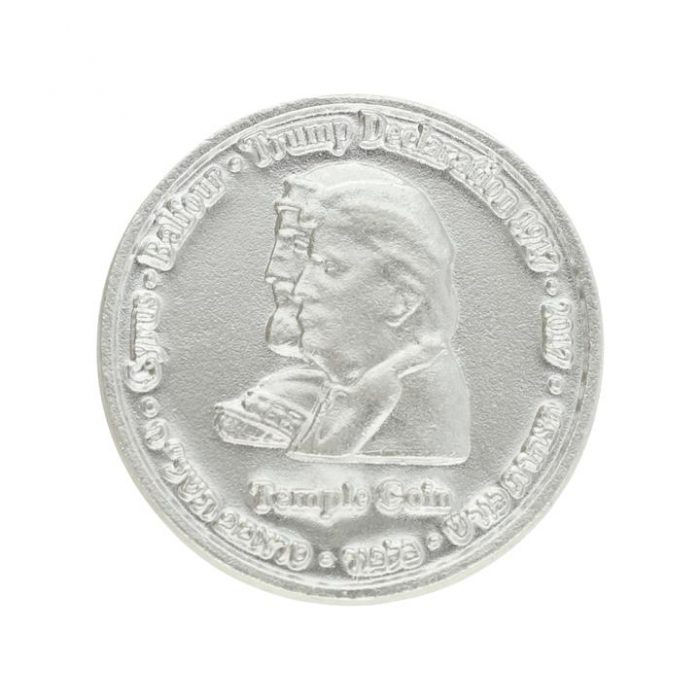
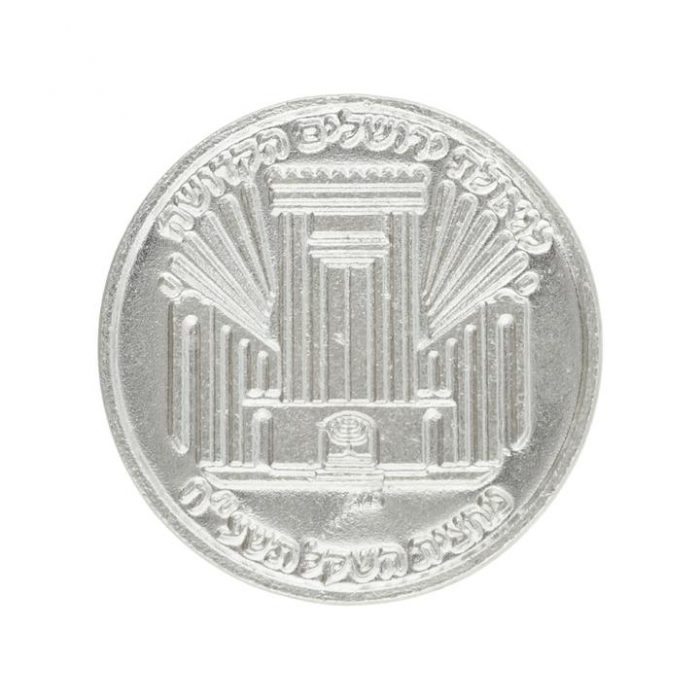
Resultingly, the Senate resolution called for the president and every American official to recognize the restoration of Jerusalem as Israel’s capital, to grant the legal recognition to Israel’s sovereignty over its Holy City that had been missing for the past fifty years. (8)
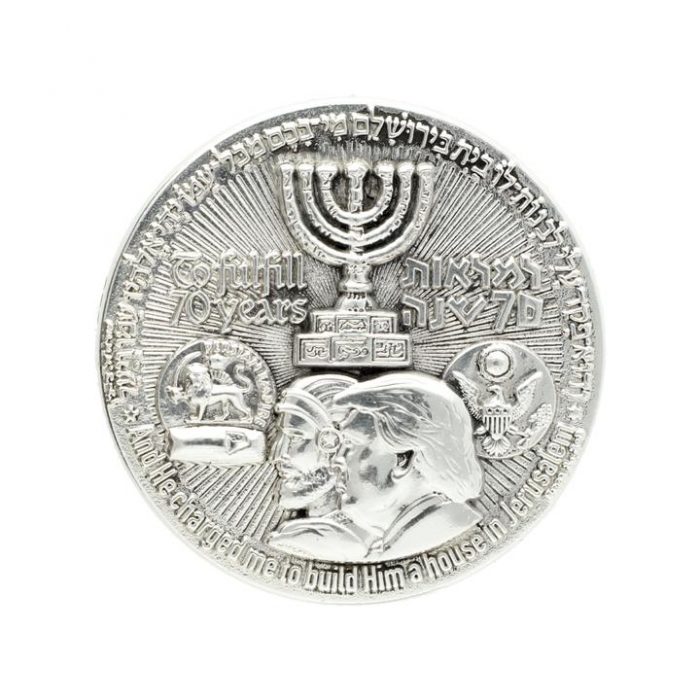
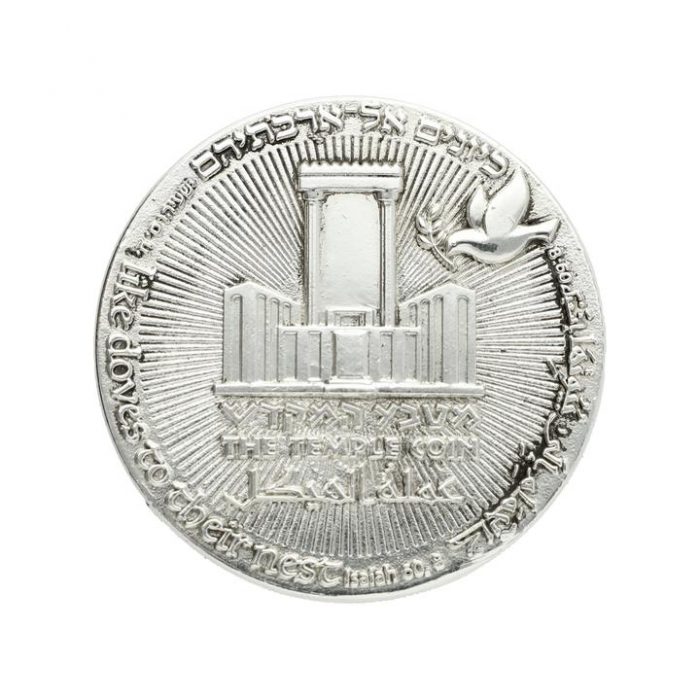
You see, God is the God of restoration. And to those who are His, He will restore all things . . . all that was lost will be found again . . . in their Jerusalem . . . and in their appointed time of Jubilee.” (5)
Jubilee Year Promises
A Jubilee Year is the time to more earnestly expect to receive your harvest from God. It is a time to trust God like never before!.
For everything there is an appointed time, and an appropriate time for every activity on earth: A time to be born, and a time to die; a time to plant, and a time to uproot what was planted; (Ecclesiastes 3:1–2 NET)
Seek the LORD while he makes himself available; call to him while he is nearby! (Isaiah 55:6 NET)
Consequently, during a Jubilee Year, believe God to do the following:
- If you are in slavery (emotionally, physically, addicted to some sin, your children enslaved to the world, unsaved loved ones, etc.), then believe all will be set free during the Jubilee Year.
- If Satan has stolen anything, then believe it will be returned during the Jubilee Year.
- If you are in debt, believe in canceling all debts during the Jubilee Year.
- If you have previously sown seeds (i.e., money, time, talents, etc.) into the work of the Lord, then believe for a supernatural harvest during the Jubilee Year.
As always, you must believe in order to receive these promises.
so that you may not be sluggish, but imitators of those who through faith and perseverance inherit the promises. (Hebrews 6:12 NET)
In addition, realize a key to receiving the blessings of the Jubilee Year is acting towards others in the spirit of the Jubilee and not simply the letter (i.e., acting in grace, mercy, and compassion towards others) (Matthew 5:39-48. Galatians 5:6).
That is, ask God to bring to your mind anyone that you have:
- Failed to forgive (1) (including yourself by His grace) and then ask for His grace, mercy, and compassion to forgive (1) to release them and yourself (1) from the captivity of unforgiveness.
- Stolen (1) from and then ask for His wisdom to make restitution.
- Owed a personal or private debt and then ask for His wisdom to make reparation (1).
Lastly, do not be surprised if whatever has held you captive for years and even decades is suddenly removed by the Lord Jesus Christ during His Jubilee Year! A Jubilee Year is the season for reaping where you have not sown in all areas of your life and ministries!
Again, during a Jubilee Year, four important things occur:
- All slaves are set free.
- All things stolen are returned.
- All debts are canceled.
- All previously sown seeds yield a supernatural harvest.
Maranatha! (i.e., Come Lord Jesus!) (1 Corinthians 16:22)
Let anyone who has no love for the Lord be accursed. Our Lord, come! The grace of the Lord Jesus be with you. (1 Corinthians 16:22–23 NET)
Feasts, Festivals, and Important Occasions of the Biblical Covenants Series:
- The Feasts of Israel – Introduction
- The Feasts of Israel – Hebrew Calendars, New Moon, Sabbath Year, and the Jubilee Year
- The Feasts of Israel – Sabbath
– The Spring Festivals:
- The Feasts of Israel – Passover
- The Feasts of Israel – Unleavened Bread
- The Feasts of Israel – Firstfruits
- The Feasts of Israel – Weeks (Pentecost)
– Seven Church Conditions during the Church Age:
- Prologue
- Jesus the Messiah!
- The Legalistic Congregation (Ephesus)
- The Persecuted and Faithful Congregation (Smyrna)
- The Persecuted and Compromised Congregation (Pergamos)
- The Licentious Congregation (Thyatira)
- The Dying Congregation (Sardis)
- The “Canceled” and Faithful Congregation (Philadelphia)
- The Dead Congregation (Laodicea)
– The Fall Festivals:
- The Feasts of Israel – Trumpets
- The Feasts of Israel – The Day of Atonement(s)
- The Feasts of Israel – Booths (Tabernacles)
- The Feasts of Israel – Dedication (Hanukkah)
Biblical Typologies, Metaphors, & Similes Series:
Shalom
(Security, Wholeness, Success)
Peace
Then he said to them, “Therefore every expert in the law who has been trained for the kingdom of heaven is like the owner of a house who brings out of his treasure what is new and old.” (Matthew 13:52 NET)
(1) Select the link to open another article with additional information in a new tab.
(2) http://www.chabad.org/library/article_cdo/aid/538797/jewish/When-is-the-next-Sabbatical-year.htm
(3) http://www.chabad.org/library/article_cdo/aid/5212/jewish/Fill-Out-a-Pruzbul.htm
(4) https://www.chabad.org/library/article_cdo/aid/513212/jewish/When-Is-the-Next-Jubilee-Year.htm
(5) Cahn, J. (2016). The book of mysteries. Lake Mary, FL: Frontline.
(6) https://www.nehemiaswall.com/aviv-barley-in-the-biblical-calendar
(7) NET Note (70) for Luke 4:19
(8) Cahn, J. (2019). The oracle: the jubilean mysteries unveiled. Lake Mary, FL: Frontline.
(9) Arab-Israeli Wars. (2015). In Compton’s Encyclopedia. Chicago, IL: Compton’s Encyclopedia.
(10) Rusten, S. with E. Michael. (2005). The complete book of when & where in the Bible and throughout history (p. 415). Wheaton, IL: Tyndale House Publishers, Inc.
(11) Norten, M. (2015). Unlocking the secrets of the feasts. Nashville: Thomas Nelson.
(12) Fruchtenbaum, A. G. (1983). The Messianic Bible Study Collection (Vol. 178, p. 13). Tustin, CA: Ariel Ministries.
(13) Edersheim, A. (1959). The Temple, its ministry and services as they were at the time of Jesus Christ. (pp. 288–289). London: James Clarke & Co.
(14) Fruchtenbaum, A. G. (1983). The Messianic Bible Study Collection (Vol. 62, p. 10). Tustin, CA: Ariel Ministries.
(15) The male animal represents this sacrifice is for God’s benefit. Recall, Adam, a male, was made for God’s benefit.
“It follows that I show for what purpose God made man himself. As He contrived the world for the sake of man, so He formed man himself on His own account, as it were a priest of a divine temple, a spectator of His works and of heavenly objects. For he is the only being who, since he is intelligent and capable of reason, is able to understand God, to admire His works, and perceive His energy and power; for on this account he is furnished with judgment, intelligence, and prudence. On this account he alone, beyond the other living creatures, has been made with an upright body and attitude, so that he seems to have been raised up for the contemplation of his Parent. On this account he alone has received language, and a tongue the interpreter of his thought, that he may be able to declare the majesty of his Lord. Lastly, for this cause all things were placed under his control, that he himself might be under the control of God, their Maker and Creator. If God, therefore, designed man to be a worshipper of Himself, and on this account gave him so much honour, that he might rule over all things; it is plainly most just that he should worship Him who bestowed upon him such great gifts, and love man, who is united with us in the participation of the divine justice.”
Lactantius. (1886). A Treatise on the Anger of God. In A. Roberts, J. Donaldson, & A. C. Coxe (Eds.), W. Fletcher (Trans.), Fathers of the Third and Fourth Centuries: Lactantius, Venantius, Asterius, Victorinus, Dionysius, Apostolic Teaching and Constitutions, Homily, and Liturgies (Vol. 7, p. 271). Buffalo, NY: Christian Literature Company.
Eve, a female, was made for the man Adam’s benefit and hence when female animals are prescribed in other sacrifices then it is for mankind’s benefit.
The Lord God said, “It is not good for the man to be alone. I will make a companion for him who corresponds to him.” (Genesis 2:18 NET) (16) F. F. Bruce, “In the New Testament,” ed. D. R. W. Wood et al., New Bible Dictionary (Leicester, England; Downers Grove, IL: InterVarsity Press, 1996), 158.

